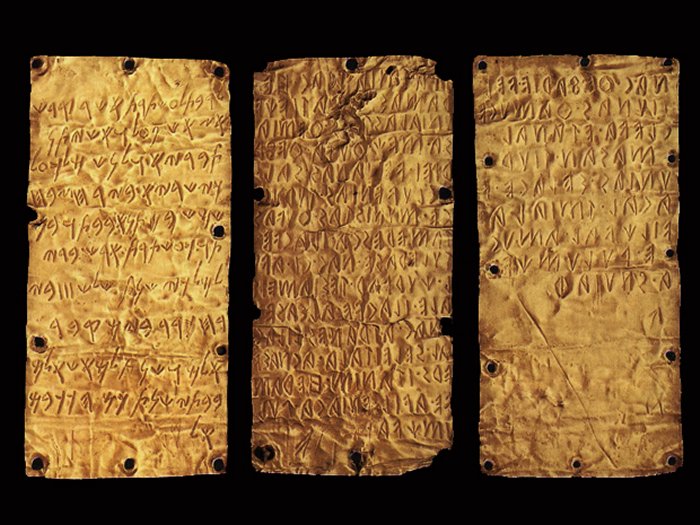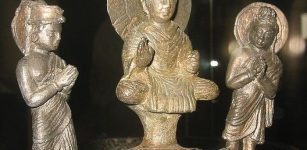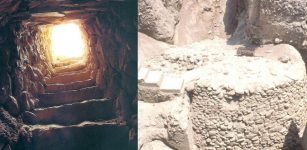Pyrgi Gold Tablets: A Rare Ancient Bilingual Treasure
MessageToEagle.com – Dating back to 500 B.C., the Pyrgi gold tablets were discovered in 1964 in an excavation of a sanctuary in ancient Pyrgi, the port of the southern Etruscan town of Caere in Italy.
The three gold plates contain holes around their edges, which indicate that they were likely bound together in some form at one point. What makes the tablets so special is that they are bilingual.
Two of the tablets are inscribed in the Etruscan language, the third in Phoenician and are today regarded as the oldest historical source of pre-Roman Italy among the known inscriptions. They contain a dedication by King Thefarie Velianas to the Phoenician goddess Astarte, also known as Ishtar.

The Pyrgi gold tablets are rare and unusual. They are an ancient treasure both from a linguistic and a historical point of view.
See also:
10 Mysterious Undeciphered Ancient Scripts, Tablets, Codes And Maps
Father Crespi’s Mysterious Library Of Golden Treasures
Discovery Made In Ancient Tomb – Six Golden Pages Of The Oldest Book In The History Of Mankind
Explore Remarkable And Mysterious Ancient Artifacts
The tablets offer researchers a possibility to use the Phoenician version to read and interpret the otherwise undecipherable Etruscan.
According to William J. Hamblin, a professor of history at Brigham Young University, the three Pyrgi gold tablets are a prime example of the spread of the Phoenician practice of writing sacred texts on golden plates from their original center in Phoenicia, via Carthage, to Italy, and is roughly contemporary with the Book of Mormon’s claim that sacred texts were written on metal plates by the Phoenicians’ closer neighbors, the Jews.
MessageToEagle.com










